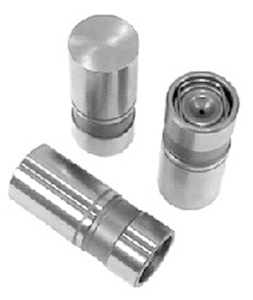The latest version of Chrysler’s “A” engine block features a different lifter bore angle. This block is commonly called the “R” block.

The angle of the lifter bore is changed to help straighten out the pushrod angle. The standard lifter angle on the “A” engine is 59 degrees from vertical. This points the lifter away from the center of the block and angles the pushrod toward the outside.
Most of the blocks and some highly modified versions of the “A” engine have a 48 degree lifter angle. This points the lifter more directly at the rocker arm and helps to eliminate deflection at very high engine speeds. No standard production blocks were made with this modification, so if your block is not a special “race only” part from Chrysler, you probably have the 59 degree lifter angles. These cams are not interchangeable, so it is important to note the lifter bank angle prior to ordering any racing cam. If no special lifter bank angle is stated, the standard 59 degree cam will be used.
The same changes are common on some of the newer aluminum aftermarket Hemi blocks, the difference being much more subtle, from 45 to 48 degrees. It is extremely important to make sure which lifter angle your block is machined for prior to ordering a cam. As with the small block, if no special lifter angle is requested the cam will be ground as with the standard 45 degree lifter angle.
– Tech Tip courtesy of COMP Cams.













